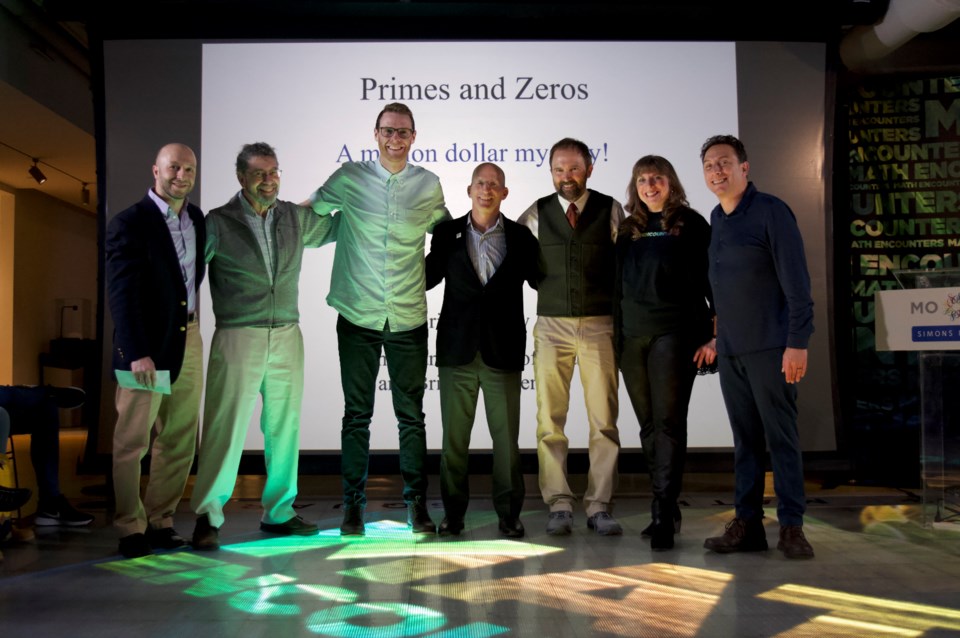Math is, without a shadow a doubt, a crucial skill. For many, it is a subject that is hard for many people to really get into. In fact, it's difficult for many people, period. Many of us have grim memories of math class in school – endless times tables; algebra. What does all this mean? On the flip side, too, mathematics teachers also face an uphill battle, to be sure. How do you make numbers exciting? Context is key – it is how many of us learn, but how do you make the numbers mean something in a real world scenario? When one thinks of math class, it's hard to picture the vast majority of students wilfully and excitedly learning complex mathematical concepts involving probability. One might even say the concept might seem improbable. One man, however, has quite literally found a way to beat the odds.
Enter Nat Banting. Banting is a mathematics teacher on the faculty of the University of Saskatchewan's Department of Curriculum Studies. In layman's terms, he is literally a teacher's teacher. He develops effective methods of teaching children, and then teaches educators how to implement these techniques in the classroom. Now, the bright lights of New York have taken notice. Banting's lesson, and its addicting effectiveness was quickly recognized as world class. It won the Rosenthal Prize for Innovation and Inspiration in Math Teaching, from the National Museum of Mathematics in New York City. Banting is the first Canadian math teacher ever to win this prestigious prize.
The problem was deceptively simple: how do you engage kids in the classroom with a subject many people struggle with, and have them learn and actually retain the material? Especially when dealing with theoreticals like variables and probability?
The solution: predicting the outcome of rolling dice.
That's right, you heard correctly. Figuring out how to beat the house.
In fact, the name of the lesson is just that: “Dice Auction: Putting outcomes of the dice up for sale.”
The lesson also includes an element of risk. That element involves students not just making decisions on the possible outcomes themselves, but adds bidding on the outcome.
“I had kind of adapted an earlier lesson I had done with my Grade 9 class,” said Banting.
“[In involved] probabilities and quantification of risk, which is one of my favourite areas of mathematics. When you teach in school, often times you get to boil down to predicting what familiar objects will do – like dice, and coins. Then, all What I wanted to do was create an environment were calculating the probability is very straightforward. You can do that with a simple process for a middle school to lower high school level student as a starting point. So what I did, is I actually set it up as an auction [of] many of the results of rolling two dice together. I set them up as auction lots, as you would see in an auction house. Then, the kids had all of them and decided which one they wanted to bid on.”
Step 1 achievement unlocked: get the kids to literally annex the outcome they want to predict, so they have an emotional investment.
“They had 100 units of currency, and then they had to bid on it.”
Of these lots, then they had to predict what their classmates would do.
“The calculation of probability is a starting point, but it's not the end of the mathematical reasoning. These calculations of risk change with new information. If the second group to your left, say, overbid for that one lot, that can have one of two effects. It might indicate inflation of the market, so you're going to let that pass, or people are running out of money – so it's kind of a very mathematically rich environment by having those calculations be a vehicle on which the reasoning moves forward.”
The effectiveness of the lesson was not lost on educators in the United States. Finalists for the award must submit a video proving that the lesson engages students – in essence, a case study.
“If you look at his video, you'll see kids that are engaged,” said Cindy Lawrence, Executive Director for the National Museum of Mathematics.
“They're laughing. They're working together, but they're having a great time while they're doing it. It's very much a part of our philosphy to bring to life that part of mathematics that is fun and exciting, and engaging and collaborative – things that people don't normally associate with mathematics. In the real world, so much of math is collaborative. So much of math moves forward when people work together. So, his [Prof. Banting's] lesson really emphasizes collaboration – and they [the students] really have to work together.”



.png;w=120;h=80;mode=crop)
